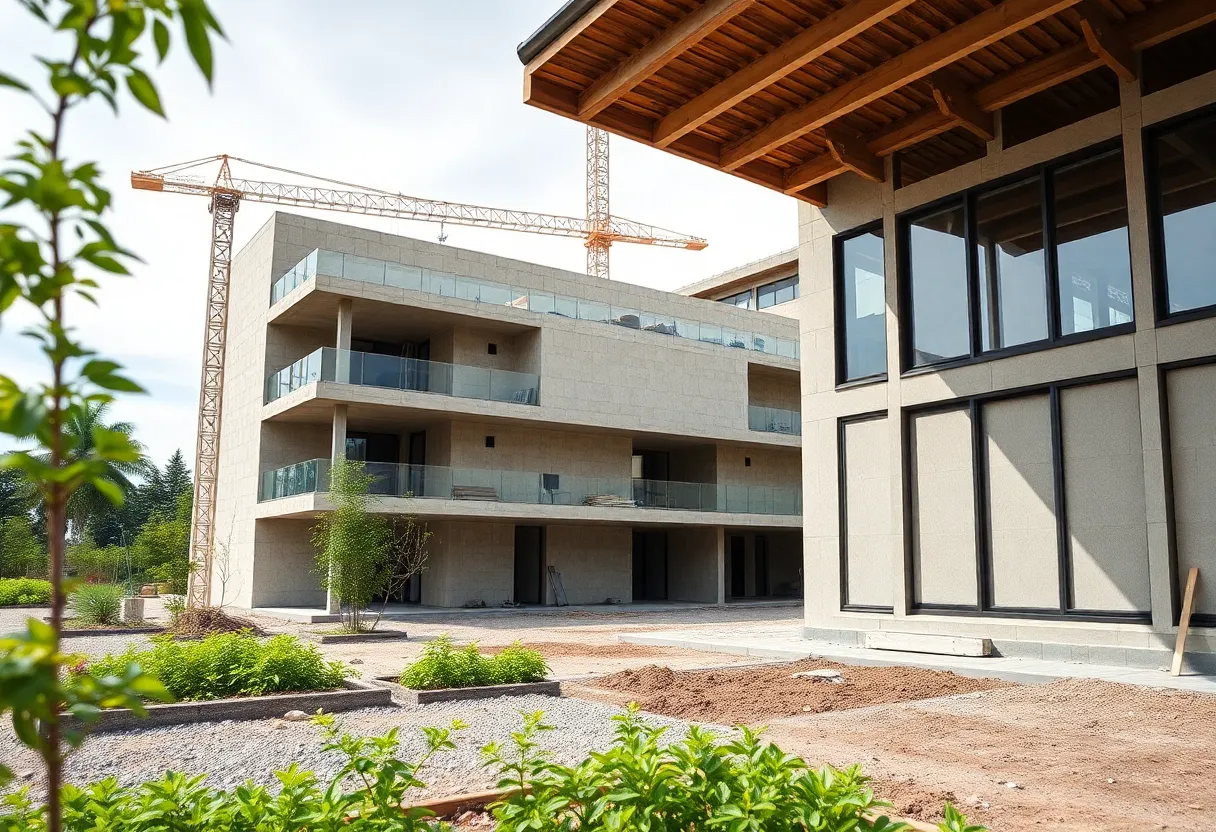South Korea, August 21, 2025
News Summary
A team of South Korean designers has introduced Re:shell, a biodegradable building material made from discarded eggshells. This material aims to address the significant construction waste problem in South Korea, which generates about 45% of the country’s total waste. By utilizing calcium carbonate from eggshells, Re:shell not only provides strength and durability but also decomposes naturally in soil, presenting an eco-friendly alternative to conventional materials. Future applications may include structural components and enhanced water resistance, aligning with sustainable building practices.
New biodegradable building material made from discarded eggshells aims to cut construction waste
A team of designers in South Korea has created Re:shell, a new biodegradable building material made primarily from discarded eggshells. The modular design uses interlocking brick-like elements that can form interior partitions, facades and other building components. The project is intended to help reduce the large share of construction waste in South Korea, which makes up about 45% of the nation’s total waste.
Key facts and immediate details
Re:shell was developed by a design team within the Living Design Lab at a major South Korean university. The material turns waste eggshells into a powder that, when mixed with natural additives, hardens into durable units. The main chemical in eggshells is calcium carbonate (CaCO₃), which gives the material binding and hardening qualities similar to cement while remaining fully biodegradable when returned to soil.
How it’s made and why eggshells
The manufacturing process begins with collection from local bakeries, restaurants and other food businesses. Eggshells are washed, dried and ground into a fine powder. Designers add natural components such as red clay for toughness, wheat bran for texture, and straw to improve flexibility and reduce weight. The powder mix is shaped into modular elements that lock together without mortar or persistent binding agents.
Performance and environmental profile
Early tests show Re:shell elements can reach high hardness levels and strong surface strength, making them suitable for non-load-bearing partitions and cladding. The design team reports that the material can break down naturally when buried, leaving no lasting residue, which supports a zero-residual waste claim. Work is under way to add water resistance while preserving full biodegradability.
Design approach and potential uses
The project is built around a design philosophy that seeks balance between nature and human needs and takes cues from traditional Korean architecture in form and detail. Prototypes range from small household products to full-scale architectural tests. Current uses explored include interior partitions, decorative facades, and modular elements for temporary structures. The team is also researching whether future versions could serve as structural components, which would broaden possible construction uses.
Why this matters now
South Korea’s rapid industrial growth and urban expansion since the 1970s and 1980s produced large volumes of building waste. Re:shell addresses two problems at once: it finds a use for a common food waste stream and it offers a way to reduce long-lasting, hard-to-recycle construction materials. By relying on local supply chains for eggshell collection, the approach also lowers transport and processing footprints.
Next steps and challenges
The designers plan to continue improving water resistance while keeping the material fully biodegradable. Scaling production will require steady supply chains for clean eggshells and testing to meet building codes if the material is used in structural roles. Ongoing experiments with natural additives aim to fine-tune strength, weight and thermal behavior for different uses.
Context within the design community
The project was shared as part of a design submission feature that invites reader-contributed projects. It has drawn attention for its practical reuse of food waste and for exploring how modular, low-impact materials can fit into modern building practices without leaving long-term waste behind.
Frequently Asked Questions
What is Re:shell?
Re:shell is a biodegradable building material made mainly from crushed eggshells and natural additives, formed into interlocking modules for architectural use.
How are eggshells turned into building material?
Collected eggshells are washed, dried and ground into a powder. That powder is mixed with natural materials like red clay, wheat bran and straw, then molded into modular elements that harden into durable pieces.
Is Re:shell strong enough for buildings?
Lab tests show high surface hardness and suitability for non-load-bearing elements such as partitions and facades. Research is ongoing to determine if versions can meet structural requirements.
Does Re:shell decompose?
Yes. Designed to be fully biodegradable, Re:shell can break down naturally in soil, leaving no long-lasting residue.
Where do the eggshells come from?
Eggshells are sourced from local bakeries, restaurants and food businesses where eggs are used in large quantities.
What are the main challenges?
Key challenges include improving water resistance without losing biodegradability, scaling collection and production, and meeting regulatory standards for wider construction use.
Quick reference: Key features of Re:shell
| Feature | Detail |
|---|---|
| Primary material | Eggshell powder (rich in calcium carbonate (CaCO₃)) |
| Form | Modular, interlocking brick-like elements |
| Additives tested | Red clay (durability), wheat bran (texture), straw (flexibility/lightweight) |
| Production steps | Collect → wash → dry → grind → mix with natural additives → mold → cure |
| Performance | High surface hardness; suitable for partitions and facades; biodegrades in soil |
| Environmental goal | Reduce construction waste and recycle food waste into building material |
| Current limits | Water resistance under development; structural use still being explored |
Report prepared from project details released by the design team. This summary presents the material’s aims, process and potential without endorsement of any organization.
Deeper Dive: News & Info About This Topic
Additional Resources
- Designboom: Re:shell Biodegradable Building Material
- Advanced Science News: Biodegradable Bioplastics
- Laotian Times: ESG-focused Upcycling and Eco-friendly Collaboration
- Nature: Research on Biodegradable Materials
- Korea Herald: News on Sustainable Building Materials





